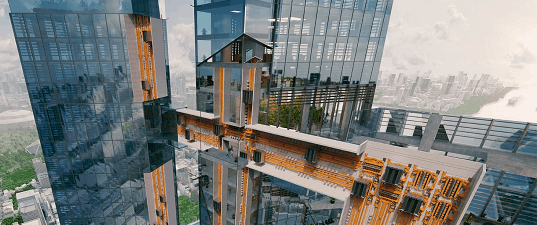The recent announcement by ThyssenKrupp that it had successfully tested an elevator that can move vertically, horizontally, and diagonally may evoke visions of Willy Wonka’s fantastical factory, but it has serious real-world implications for a rapidly urbanizing planet. With 50% of the world’s population already residing in cities and predictions for that number to jump to 70% by the end of the century, solutions that allow for increased density are being explored by urban planners and building designers. Radical new elevator technology may be the key to these solutions.
As the world’s population moves into cities, increased building size is required for housing, office, and retail space. If horizontal spread is restricted by geographic and other boundaries, the additional space must be added vertically. Building height has long been restricted by traditional elevator technology since cables add substantial weight to buildings and become strained with increased height. The new MULTI elevator is a rope-free solution that used magnetic levitation, the same system used to move Japan’s bullet trains and proposed for the Hyperloop. This solves the issues caused by cables and also frees up some of the space consumed by traditional elevator shafts.
The horizontal and diagonal movement that the MULTI enables also makes it more than just an elevator. The MULTI could be used to move people around large campuses or even across cities, just like a public transit system. This obviously raises all manner of policy and regulatory issues, but it also opens up the possibility of truly innovative public-private partnerships to address the challenges that will increasingly face cities.



